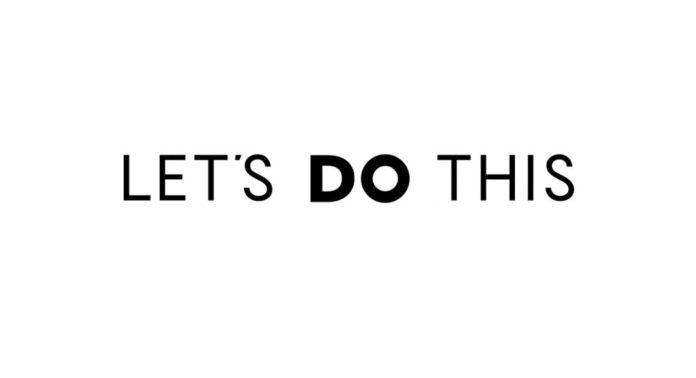
USE THEM TO CHANGE YOUR PRACTICE!
Emily Dickinson, the nineteenth-century American poet, reportedly once wrote, “I know nothing in the world that has as much power as a word.”
I am a big believer in the power of words, especially words that help patients understand the power of dentistry to change lives. Fortunately, early in my career I stumbled upon what I think are the three most powerful words that a dentist can use to engage patients during a case presentation. I have used these words to great effect in my own career and I have taught thousands of dentists how to use them in their practices, too.
So without any further ado, the three most powerful words in dentistry are . . . “Let’s do this.”
Disappointed? Surprised? Confused? Don’t be. I’ll explain why these three words are so important. However, before I do, I want to make sure we’re on the same page as far as a key principle of dentistry is concerned—comprehensive dentistry. This term is often misunderstood and misquoted and it’s crucial to fully understand. Otherwise, the words, “let’s do this” lose their power.
Comprehensive Dentistry, Defined
Many dentists believe that they are offering comprehensive dentistry to their patients simply by offering the industry-accepted standard of care. The term comprehensive dentistry has become like the phrase cosmetic dentistry—brochure words that dentists utilize for advertising because that is how dentistry is marketed to the public. Most dentists say they offer “it.” Patients know that “it” is probably a good thing if insurance will cover “it.” But no one really knows what “it” is.
Such phrases have become clinical clichés that have no real meaning other than being part of the “white noise” of dental marketing. The tragedy is that these phrases (especially “comprehensive dentistry”) actually have a profound significance to doctors who seek to understand their deep meaning.
I visit dental offices regularly and I usually ask dentists a simple test question that tells me if they are thinking comprehensively. The question is, “Have you ever prepped a full arch in one sitting?” The answer can vary but often I hear, “I just don’t have those kinds of patients in my practice,” or “my patients don’t ask for that kind of dentistry.”
My response is always simple and unequivocal. Every dental practice has numerous patients that not only would benefit from large case dentistry, but they truly require it for full dental health. A clinician who understands comprehensive dentistry knows this to be true and that knowledge becomes a source of action.
Dentists who think comprehensively will inevitably do large case dentistry because at its core, comprehensive dentistry is a process by which dentists identify a clear path to an optimal outcome for their patients. This path allows dentists to concisely map out and present to their patients without being constrained by assumptions regarding perceived financial limitations. Even if dentists have subpar presentation skills, the act of going through this process will inevitably lead them to patients and cases that will enable them to answer my test question affirmatively.
Our colleagues in the medical field have done a far better job of making a comprehensive approach an essential part of their model of care. You will never hear a cardiovascular surgeon present a quadruple bypass in stages or a single stent, simply because the doctor assumes the patient can’t afford the whole procedure. The focus should be on the optimal outcome and presenting the best path to reaching that goal—finances are a secondary consideration that should not taint the initial interaction.
You may be thinking that the medical and dental fields are worlds apart, especially in terms of finances and that a comparison between the two professions is not applicable. There are definitely some differences, but the imperative that any doctor must adhere to (whether medical or dental) is to restore the patient to the highest level of well-being possible.
Some dentists think that by offering a series of options, they are providing the patient with comprehensive care. The problem with this strategy is that by offering options without having first established the optimal path, you relegate your patient to decisions based on limited knowledge or worse, cost.
I always present the ideal comprehensive treatment in my diagnosis appointment. My approach is to start a case presentation with the words, “What I will be doing is . . .” and then I tell the patient what is “important” for the optimal outcome. I don’t provide a series of options, or cater to different price points. I tell them what is required to be restored to optimal health.
As a dentist, I am not there to sell patients anything. My job is to advise them on the best possible course of action. An advisor isn’t someone who rehashes options; an advisor is a trusted individual who understands and provides the best possible course of action, regardless of what the patient wants to hear. A dentist should be just such a trusted advisor.
I challenge every dentist to consider why you initially present multiple options rather than just the optimal course of action? Is it due to a fear of confrontation? Is it to avoid a potentially uncomfortable conversation? Or have you already decided the patient probably can’t afford it, so you therefore create options that you assume correspond to the financial limitations?
Frankly, the patient makes the decision about his or her financial situation. Your job is not to do that for your patients by limiting their options to a buffet of choices that you think may be more palatable to their financial situation. You are the doctor. You create the vision and advise patients on the best course of action because that is what you have been trained for. To do anything less is to deny yourself and your patients the power of comprehensive dentistry. Who is the dentist? You are!
As stated previously, I begin every diagnosis appointment with the assumption that I am going to do what is needed to restore patients to optimal health. I say, “What I will be doing is . . .” and then I present the comprehensive case plan that I have developed for that patient. Using this opening is important because it sets the stage for the three most powerful words in dentistry, it reaffirms my position as the doctor, and it conveys confidence with the assumption that the patient will have the work done. In the parlance of influencing others, this is called an assumptive close. If you don’t have confidence and speak with authority and conviction, your case presentation is over before it gets started.
It would be naive to think that every patient is going to say “yes” to your case presentation simply because you are confident and authoritative. This is where the three most powerful words in dentistry come into play. The words are a powerful transition that turns your case presentation into a potent, two-way exploration of what your patient needs to achieve the optimal desired outcome.
Let’s do this . . .
Why are such seemingly insignificant words so powerful? First, when delivered properly, these words are very soothing to the patient. They communicate action and a sense that you have a solution. Second, they allow you to seamlessly transition from presentation to dialogue after the patient’s initial reaction. Third, the words create a feeling of purpose and authority that gently reaffirms that this is a shared journey in which both patient and dentist are participants.
The manner in which you deliver the words is just as important as the words themselves. This statement is not intended to be an emphatic, “Let’s do this!” but rather a thoughtful response to your patient’s initial reaction to the comprehensive plan.
Here’s an example: I am doing a case presentation for “Tim,” one of my patients. I say,
“Tim, I have examined your X-rays and reviewed your case and what I will be doing is [case presentation] and to do this it is going to be $37,953.”
Then I pause and allow the patient to respond. The reaction can run the gamut but suppose that Tim responds as follows:
“Dr. Barnes, I’m shocked! I had no idea it was going to cost so much. I don’t think this is going to be possible. I have three kids and one of them is going to start college next year. I just don’t have that kind of money!”
At this point, I respond in a number of ways. Most dentists get a “deer-in-the-headlights” look and start backpedaling by providing some less costly (and less effective) options. This is precisely where the power of the phrase, “let’s do this” is manifested. I typically respond as follows:
“I can certainly understand that. Tim, is this the type of dentistry you would like if you can work it into your budget?”
“Yeah—but I don’t think my budget will stretch that far.”
“Well Tim, let’s do this . . .”
You now have an option that allows you to transition into a meaningful dialogue about exploring ways to reach the optimal outcome in your case presentation. You can involve a financial coordinator who can help the patient explore the various options to finance the dentistry. Tawana Coleman writes about this issue in great detail in her article appropriately titled, “How Can I Possibly Pay For This?”
So briefly, the dialogue with Tim could go something like this:
“Well Tim, let’s do this. I will ask Mary (the financial coordinator) to come in and explore a couple of ways that this can be worked into your budget.”
Or if the patient is absolutely opposed to any kind of financing options, you can use the words to transition into a discussion of other possibilities to reach the best possible outcome. Such a transition might sound like, “Well Tim, let’s do this . . .”
Then you can choose one of the following approaches:
• Discuss a segmental approach to the optimal outcome.
• Discuss the minimum work that needs to be done to keep the teeth from decaying further.
• Reaffirm the importance of the proposed treatment to long-term well-being and let ‘Tim’ know it is imperative that he is aware of the situation (a “no” today does not mean a “no” tomorrow, since you never know when someone’s financial situation may change).
• Discuss other treatments that allow the patient to make some progress toward the optimal outcome you presented.
Remember that you are not changing the treatment; you always treat comprehensively. You are, however, changing how much of the plan you can implement at one time by how much the patient can work into his budget.
These three little words have the power to free you from the fear of “no” that has so many dentists basing their case presentations on assumptions. The words empower you to present comprehensively because you have a tool that allows you to engage patients in meaningful dialogue about obtaining the best outcome possible.
It seems almost unbelievable that three little words can make such a difference but I have firsthand knowledge that they are the most important words in dentistry. I have built a very productive and satisfying practice using them. Had I not experienced it myself, I probably would not believe it. If you still have some doubts about the power of the words, “let’s do this,” present comprehensively to at least five patients this month. Use these words and let me know how it goes. (You can e-mail me at letsdothis@adentmag.com) I bet you’ll agree that they really are the three most important words in dentistry.
![]()
CLICK HERE To read Tawana’s article “How Can I Possibly Pay For This?” and learn more financing options you can provide for your patients.









